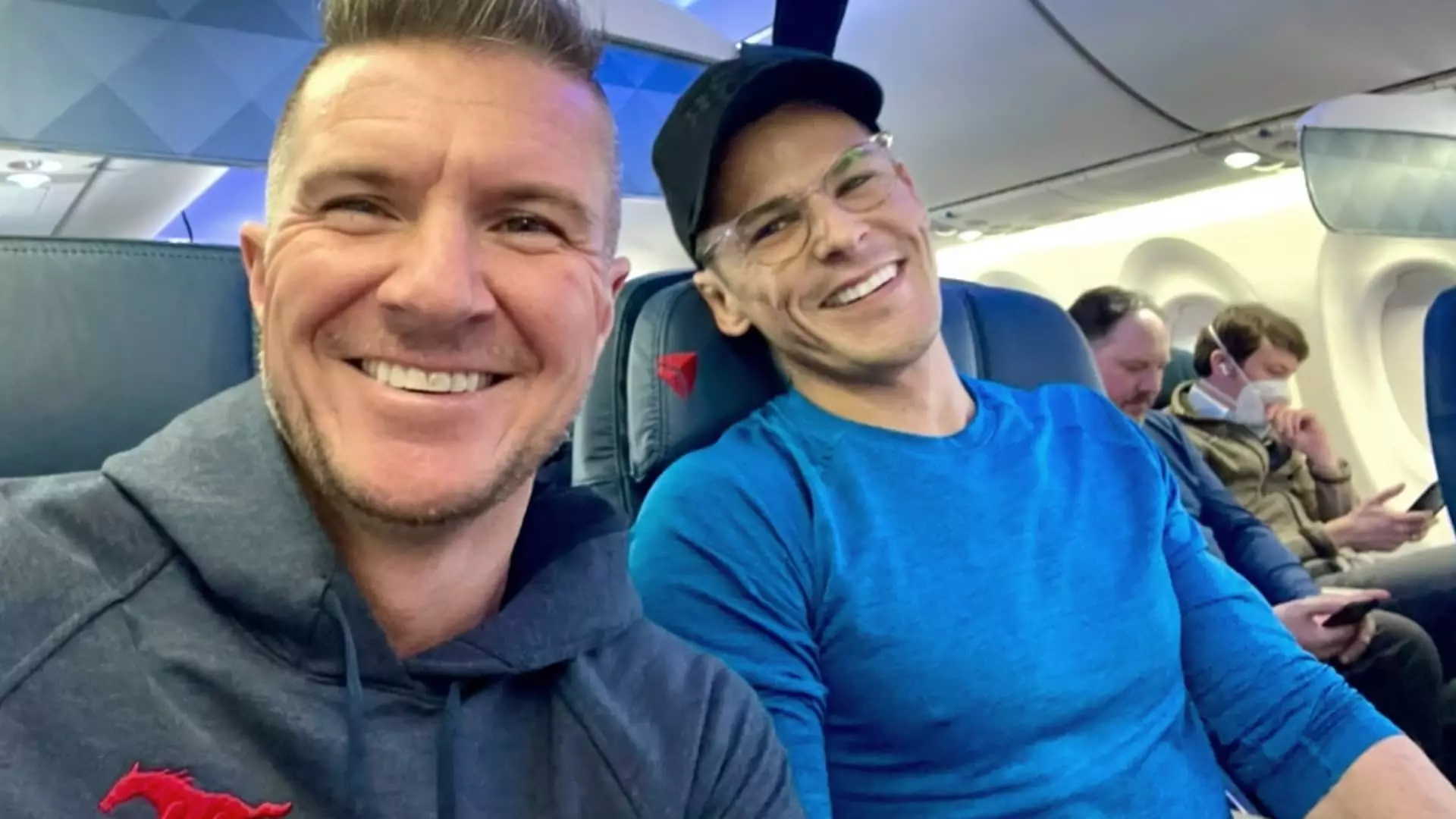Airplane etiquette is often perceived as straightforward: remain aware of your surroundings, respect fellow passengers, and adhere to the instructions provided by the flight crew. However, the persistence of disruptive behavior among travelers suggests that these simple guidelines are often overlooked. Author Brandon Blewett addresses this phenomenon in his book, “How to Avoid Strangers on Airplanes: Survival Guide for the Frequent Business Traveler.” While on the surface, Blewett’s work seems to be another exploration of the irritations present during air travel, it delves deeper. Drawing parallels between annoying in-flight behaviors and challenges in business environments, Blewett invites readers to reflect on their reactions to both contexts.
Blewett, who serves as the head of corporate development for a company in Virginia, began this project after observing a wealth of frustrating travel habits. What started as an attempt to list irritating behaviors quickly transformed into a detailed analysis of only six key concepts. His intention, stated clearly, was not to create a diatribe against fellow travelers. Instead, he aimed to uncover meaningful lessons that frequent flyers could glean from their experiences.
For instance, he introduces the term “Gate Lice” to describe those individuals who flood the boarding area prematurely, ignoring orderly seating protocols. In the workplace, such ‘gate-lice’ can be compared to colleagues who impede your progress, much like they block the boarding process. Blewett suggests that learning to navigate around these disruptions, such as by utilizing the skill of the “pivot,” can be critical for achieving career success. He recounts a personal narrative of how he bargained with his uncertain career path after law school during the economic downturn by pursuing an MBA—a true pivot that eventually led him to the profession he desired.
Another aspect Blewett discusses is what he refers to as the “Airbus Assault,” where passengers wear their backpacks on their backs, inadvertently striking others as they move through cramped aisles. The metaphor extends beyond simple politeness; it reflects an essential lesson on resilience. Facing challenges and ‘smacks’—both during flights and in professional settings—shapes a person’s ability to endure and thrive. Blewett openly shares his experiences of facing financial hardships compared to peers and missing out on career opportunities, which ultimately equipped him with the requisite experience for advancement at firms like KPMG.
In a similarly relatable vein, Blewett also highlights how the boisterous “Boeing Boardroom Meetings” of loud conference call participants disrupt others. He draws comparisons to difficult workplace personalities and emphasizes the need to approach them with “wit, grit, and humility.” By referencing iconic personalities like Dolly Parton, who transcended prejudice through her humor and self-deprecation, Blewett illustrates the importance of maintaining composure and kindness in both life and career.
As Blewett articulates the concept of “Bin Shoehorning,” where travelers force oversized bags into overhead compartments, he offers insight into professional misalignment, which often leads individuals to pursue goals that don’t resonate with their true ambitions. The pursuit of fitting into an ill-suited role can lead to exhaustion—much like maneuvering bags into tight spaces. Reflecting on his own realization that making partner wasn’t his calling, Blewett advocates for acceptance of one’s career path, urging others to recognize when it’s time to adjust expectations.
Lastly, Blewett personifies the “Eager Exiter,” often the first to leap from their seats as soon as the flight lands. This metaphor highlights a common workplace rush—desperately seeking promotion or success without contemplating the necessary steps to achieve those goals. The irony of the eager rush is exemplified by the story of a passenger who attempted to jump ahead in the boarding line but instead found himself delayed. This reflects the necessity for patience in both travel and professional journeys, as rushing can lead to setbacks.
Brandon Blewett’s observations serve as a reminder that the behaviors we encounter in transit often mirror the struggles faced in our professional lives. His book, rather than merely rattling off complaints about fellow travelers, entreats readers to capture the wisdom embedded in these daily frustrations. By understanding these dynamics, business travelers can refine their own approaches to career challenges, perhaps transforming frustrating encounters into opportunities for growth. In the interconnected worlds of travel and business, a thoughtful approach proves to be as vital as the destination itself.

